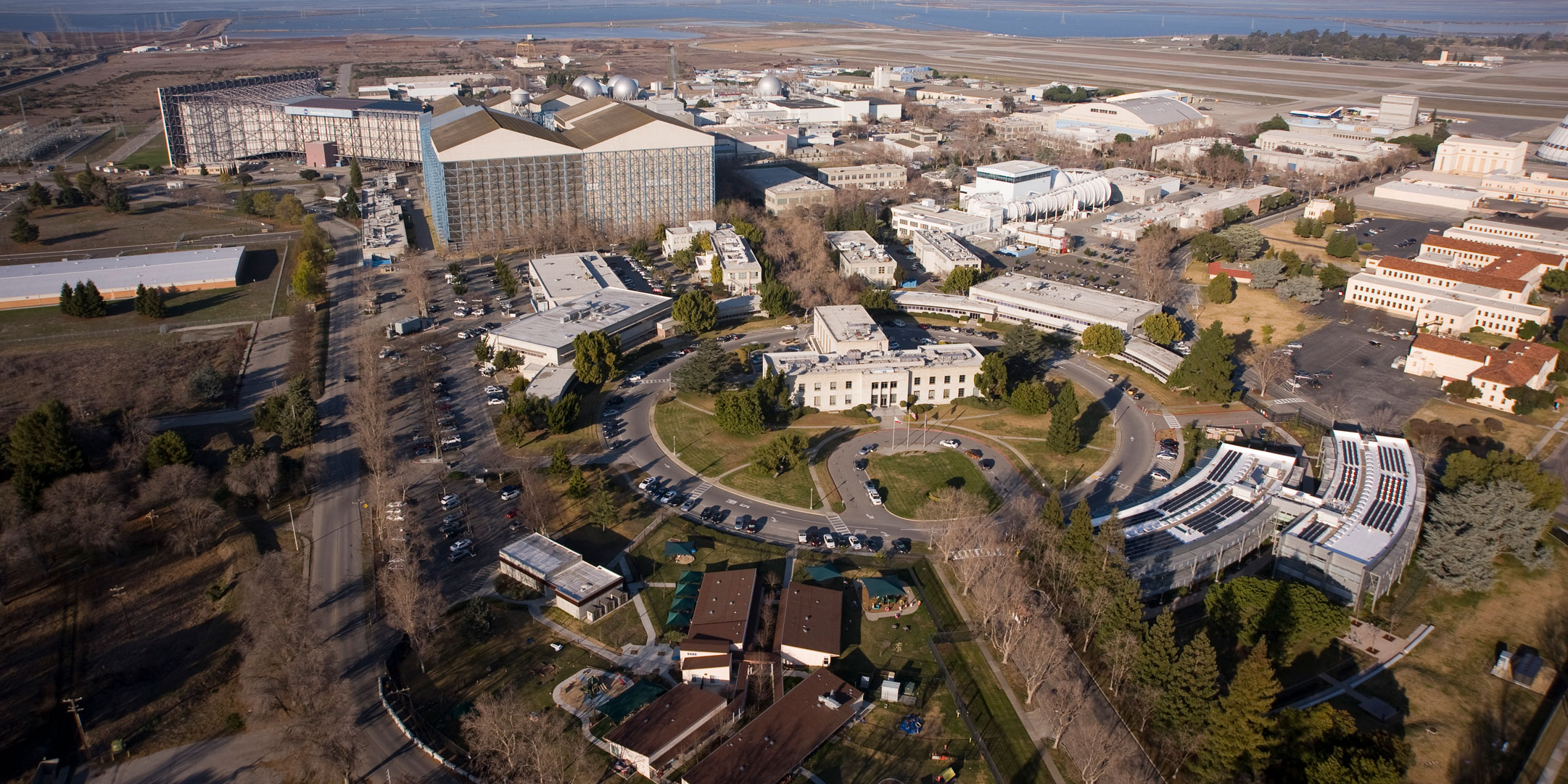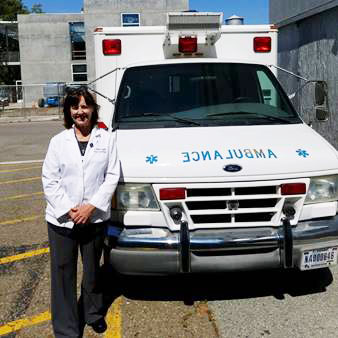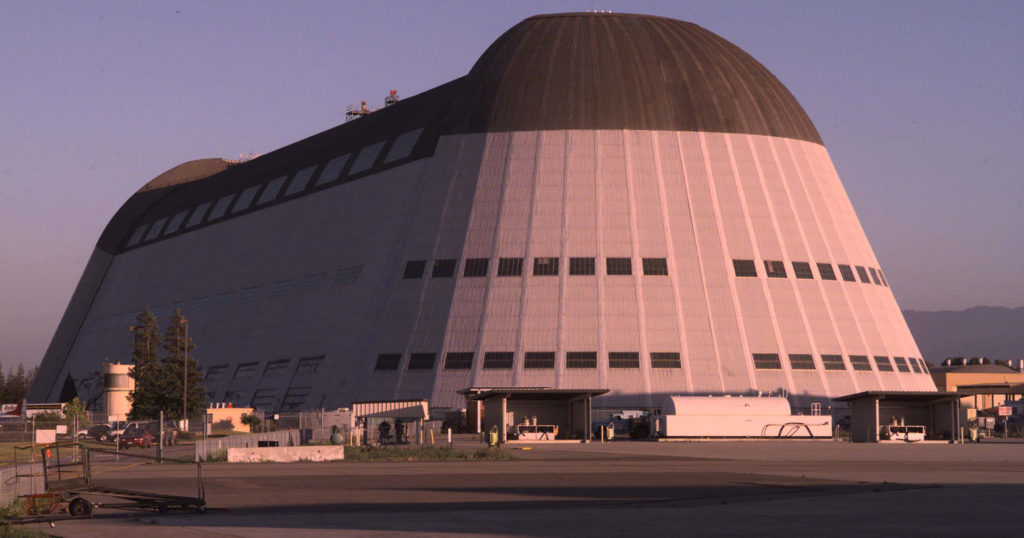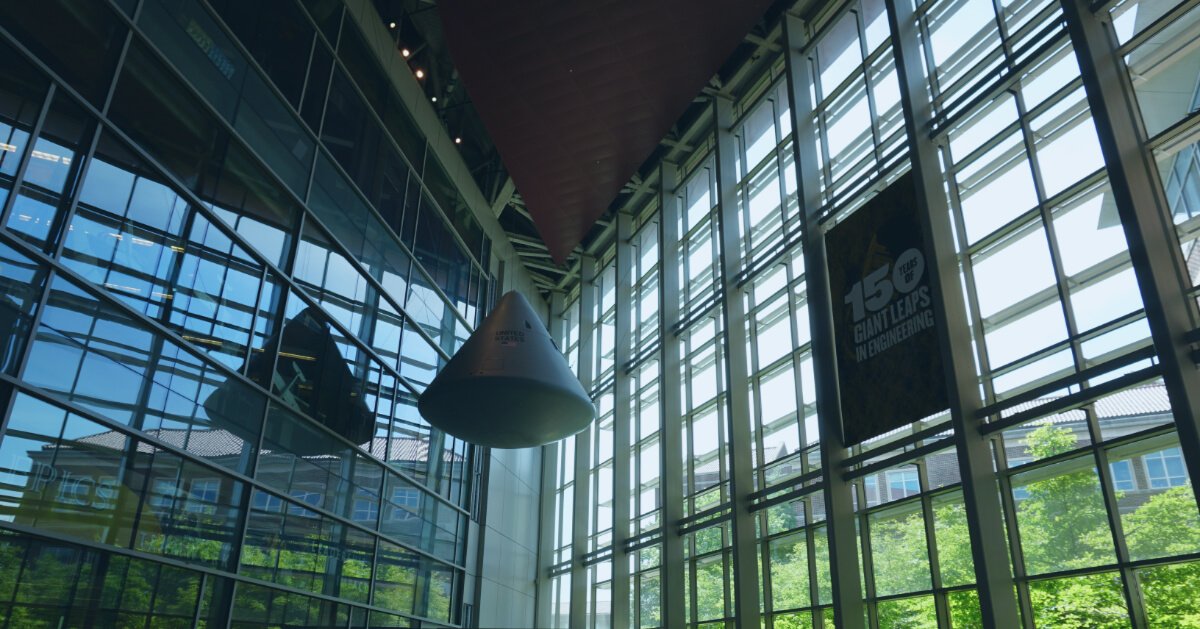Purdue Nursing alumna works at NASA as occupational health nurse practitioner
As Purdue celebrates 150 Years of Giant Leaps, we recognize Caroline Mullen Gerughty (’84, B.S. Nursing), a Purdue School of Nursing alumna whose small steps as an undergraduate led her to take giant leaps to become an occupational health nurse practitioner at NASA.

Caroline Mullen Gerughty has been at NASA Ames Research Center at Moffett Field, CA since 2014. She works as a contractor for NASA—common for medical and safety staff. Prior to NASA, she worked as an occupational health nurse practitioner (OHNP) at Stanford University Hospital Emergency Department and Employee Health, and for the City of San Jose, CA Employee Health Services.
We caught up with Gerughty via email about life at Purdue and becoming a nurse at NASA. Some edits have been made for clarity.
What led you to a position at NASA?
The space industry and research done at Ames is very interesting. I was looking for an occupational health nurse practitioner (OHNP) position in which I could learn about a new industry and grow professionally. The job at NASA fit my experience and expertise as an OHNP. Work at NASA is a nice mix of occupational health and urgent care.
What is different about being nurse practitioner (NP) at NASA versus a typical medical center?

There was a high level security clearance to work at NASA. Also, if we get an emergency call, I am certified to drive the ambulance—accompanied by a nurse—to the worksite to care for the injured employee.
What’s a typical day on the job?
Our clinic staff includes a medical director, myself, a registered nurse (RN), licensed vocational nurse (LVN), and office manager. Our patients include Government employees of NASA, contractors working at NASA, student interns, and visitors. A typical day includes opening the clinic with checks and calibrations of equipment. I review labs and check charts for the day. We typically have scheduled appointments for annual health exams, medical clearance and surveillance exams, DOT exams, plus any walk-ins for urgent care needs.
Patients are checked-in and vital signs and testing are done by the nurses. I review tests: EKGs, Audiograms, Spirometry, vision testing, and labs for each patient before doing the exams. Patient education for health maintenance and prevention of injury and illness are an important part of the job. Other activities include MERT (Medical Emergency Response Team) drills and training, Safety Days, presentations, updating policies, and training of staff.
How did Purdue prepare you for your profession?
Purdue gave me a very solid base for nursing with an amazing education. I remember a project where I did a glaucoma screening program. It was a challenging project for a student nurse. When I graduated I had no trouble transitioning to a professional nursing position. I traveled for three years as a traveling nurse. Everywhere I go or work in the USA, Purdue is well-known and has a wonderful reputation. I believe my Purdue University nursing education helped me to be a great nurse. Throughout my career, my Purdue degree helped me when I was interviewing for new jobs, applying to graduate school, and becoming an NP.
At Purdue, I felt like I was encouraged to work and think independently.
What has been a Giant Leap in your career?
A giant leap was transitioning from being a critical care-based nurse at a hospital to being a graduate student in the Adult Nurse Practitioner program with a specialty in occupational health at University of California at San Francisco. I loved being an RN but I was working with patients who were already so ill that I was just helping them stay alive and get back to baseline. As an OHNP, I am able to work with patients to prevent those illness and injuries.
With several companies looking to eventually send civilians into space, have you given any thought to the future of nursing in the space industry?
I have a nurse colleague at Ames who worked with the first astronauts when the space industry was just starting. She was the nurse for the astronauts, their wives, and families. She has amazing stories. I believe that in the future of nursing in the space industry, we will continue to need dedicated nurses here on Earth, as well as nurses willing to travel and work in space.
The new NASA slogan is the first woman and next man to the moon. Someday it may be the first nurse to space!

What experiences prepared you to become an OHNP at NASA Ames?
My master’s degree was an adult NP (nurse practitioner) with a specialty in occupational health from University of California at San Francisco. I had been working as an OHNP for over 15 years. Besides the OHNP role, there is an emergency response component. I am ACLS (advanced cardiovascular life support) certified. Our clinic has a crash cart. I am certified to drive our ambulance to transport patients from their work area to our clinic. Also, we have an MERT (Medical Emergency Response Team). I had over 10 years of experience as a critical care nurse. Also, I volunteered at my children’s school as the Emergency Response Coordinator. I organized supplies and drills for students and staff. All of these experiences helped to fulfill the additional emergency response role at NASA Ames.
What is most rewarding about your occupation?
Making impacts on a daily basis in the lives of individuals to better their health. I love it when I see a patient who reminds me I told them to do something to improve their health and they let me know it has made a difference.

Are you aware of other Purdue alumni working at the NASA Ames Research Center?
There are no astronauts at Ames from Purdue. However, there are a few Purdue engineers (aerospace, mechanical, etc.) working here. It’s fun to reminisce about our days at Purdue.
Are there any special, fun or fond memories of Purdue that you’d like to share?
I spent many hours at the library in the School of Pharmacy because it was the quietest and close to the Nursing building. I was also a member of Ann Tweedale cooperative house.
Discover more from News | College of Health and Human Sciences
Subscribe to get the latest posts sent to your email.